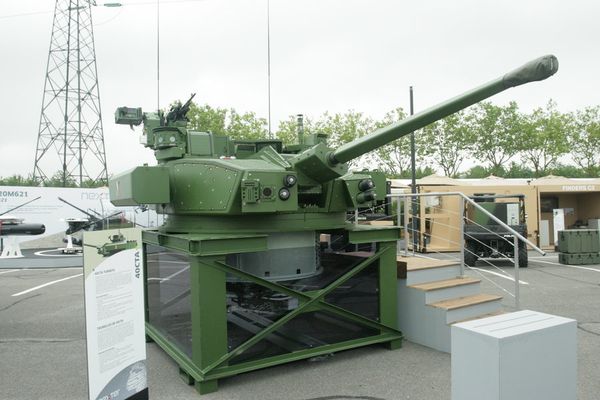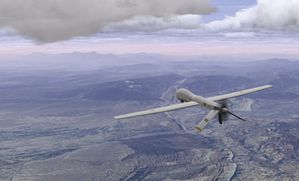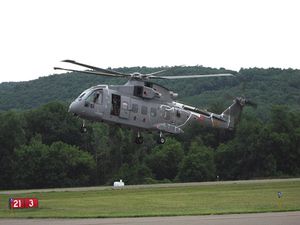10/23/2012
Thomas R. Shelley - defenceiq.com
About the author
Dr Thomas R Shelley, Ph.D., M.A., M.I.M.M.M., C.Eng., F.S.O.E., F.I.Plant.E. Director Technology and Development, Blast Absorption Systems. Dr Shelley graduated with a First in Part II
Metallurgy from the University of Cambridge in 1967, and obtained his Ph.D., from the same institution in 1970.
__________________________________________________________________________________
Armour’s ability to resist and absorb the effect of IEDs can be enhanced and made more effective by employing patterns of pre-stress, in different directions and even along curves, according to
our technology start-up, Blast Absorption Systems Limited (BASL), based in Kent, UK. The concept of employing patterns of pre-stress, in different directions for enhanced protection against
blast combined with effective configuration will lead to savings in vehicle weight, with attendant benefits for a vehicle’s centre of gravity.
The idea comes from architecture, where chartered architect Simone DeGale came up with a novel means of reinforcing the structure of a spherical building in order to reduce its weight and cost.
The model of the reinforcement came to my attention while I was reporting for the engineering magazine 'Eureka', and I realised that the principles employed in the framework were applicable to
engineering construction. This triggered the formation of a new company to protect, develop and exploit the technology.
While BASL is committed to exploiting the technology’s heritage to enhance the ability of structures to withstand blast, its current focus is on developing the technology to counter the blast
from IEDs targeted at military vehicles and our Armed Forces on operations today.
Readers are aware that the IED is a main killer today. It has been used effectively by insurgents both in past conflicts, including WWII, Northern Ireland and Iraq, and now in current
conflicts. The present concern about their use is focussed on Afghanistan, where for insurgents IEDs are a cost effective way of combating well trained and better equipped armies. So we
must, unfortunately, expect to see their continued use in any conflict where insurgents seek to kill our soldiers.
In Afghanistan, there were about 400 IED attacks a month in 2008. By 2010 this tripled to more than 1,300, according to the Pentagon’s Joint IED Defeat Organization. During 2011, the total number
reported was 16,554.
The explosives used in Afghanistan are mostly made from calcium ammonium nitrate, a fertilizer that is banned in Afghanistan but easily brought across the border from Pakistan. Once
anti-explosive additives are cooked off, 5kg, buried in a cooking oil jug is enough to cause serious damage, as well as maim and kill.
In light and medium armoured vehicles, the danger comes from penetrating the vehicle’s armour, including under the vehicle hull. In vehicles with thicker armour and with a big enough explosion
underneath, the whole vehicle can be lifted into the air, which then drops back to earth violently. In this all too common scenario, it is possible for everyone inside to be killed, even if
there has been no penetration of the hull and everyone is strapped into suspended seats.
The Standard Approach
A main battle tank is unlikely to be penetrated and while it offers protection and firepower advantages, in the context of insurgency operations in places like Afghanistan psychological (hearts
and minds), deployment and logistic issues as well as challenges to manoeuvre in urban and semi urban areas make it a less attractive solution in these types of campaign.
The current favoured solution is the V-shaped hull, which deflects a blast in a direction from the source of the IED where its effect against the acute angle of a V-hull is lessened. On
June 13th 2010, a report was issued by the US Marine Corps Center highlighting Mine Resistant Ambush Protected - MRAP - vehicles rolling over in combat zones. The V-shaped hulls of MRAPs give
them a higher centre of gravity and the weight of the MRAP can cause the poorly built or maintained roads in rural Iraq or Afghanistan to collapse. Of the 66 MRAP accidents between November 7,
2007 and June 8, 2008, almost 40 were due to rollovers caused by bad roads, weak bridges, or driver error, where a high centre of gravity must have been a contributory factor. And looking to
future conflicts, most MRAPs are too large and too heavy for roads even in the European Union, let alone countries with less well developed infrastructure.
A New Approach
BASL's technology claims to offer better protection against blast and does so at reduced weight for a given level of protection and, depending on the configuration, with a lower centre of
gravity. The solution requires no additional materials, but instead employs patterns of pre-stress so as to produce the maximum amount of pressure resistance and energy absorption before a
structure starts to collapse (see figure below).
Due to intellectual property, it is not possible in an open article to explain either how our armour technology protection system absorbs more energy or offers enhanced resistance to blast or how
the system would be configured and manufactured. However, soon after the idea was conceived, we consulted Professor Carl Ross, BSc (Hons.), PhD., DSc., CEng., F.R.I.N.A., M.S.N.A.M.E.,
emeritus Professor of Structural Dynamics at the University of Portsmouth, who applied it to a hypothetical submarine hull, his particular field of expertise. Using repeated mathematical
analyses, because standard finite element analysis software will not cope with the unusual stress distribution, resistance to an external pressure impulse was found to be enhanced by up to 84%
without any increase in weight. Should there be large amounts of residual pre-stress on the outside of the hull, steel hull plates would undoubtedly suffer from stress corrosion cracking. Scorn
has been poured on the idea of making a submarine hull this way, because the cause of some sinkings of submarines and ships has been attributed to residual stresses from welding, but BASL’s
system has been subjected to analysis with regard to manufacturing techniques and this indicates that stress corrosion cracking would not be a problem.

Development to Technology Readiness Level 3, proof of concept, is continuing a pace, aided by a MOD UK Research and Development grant from the Centre for Defence Enterprise. Our company was
only one of only four successful companies to win a grant out from over 100 applications and is now working with TWI, a globally renowned materials research institution, to improve the protection
of armoured vehicles against the effects of IEDs.
Literature studies undertaken by TWI have shown that the concept of employing patterns of pre-stress, in different directions is new. The basic technology is applicable to metals, polymers,
composites and laminated constructions of layers of different materials. The concept is different from the simple linear pre-stress that is applied to reinforcing bars in concrete which has been
around for decades, and allows the construction of bridges and buildings that are far less expensive and achieve much more than would be possible without pre-stress. Computer modelling and
research by the same institution shows that the technology has potential in military applications for enhanced protection.
Other opportunities have been identified in applications as diverse as protecting other vehicles such a used by NGOs, diplomats and VIPs, strengthening wind turbine blades, deep diving submarine
hulls and low cost boats and reducing weight in performance cars without sacrificing strength.
The principles of the invention are fully protected by patent. Given that approaches have already been received, BASL is now moving to the next stage of development by seeking a commercial joint
venture partner or partners to undertake armoured vehicle development, design, integration and manufacture with the aim of initially retrofitting the technology to current military vehicles and
fielding to operational theatres as quickly as possible.






























